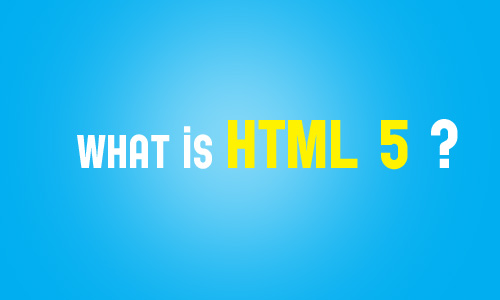HTML: Definition
HTML or “Hypertext Mark-Up Language” is a “marking” language whose role is to formalize writing a document with formatting tags. The language is nowadays most commonly used in the creation of webpages. The tags allow you to specify how the document should be presented and the relationship it has with other documents.
The tags used are written in between angle braces. For example, <html>.
Here is a list of all existing html tags.
HTML: Internet
HTML allows the playback of documents on the Internet from different computers, thanks to the HTTP protocol, allowing access via the network to documents identified by a unique address, called a URL.
The World Wide Web (WWW for short), or simply Web is a “virtual canvas” formed by the various documents (called “web pages”) linked together by means of hyperlinks.
Web pages are usually organized around a home page, playing a central point in the navigation using hyperlinks. This coherent set of web pages linked by hyperlinks and centered around a common home page is called web site.
The Web is a huge living archive composed of a myriad of websites offering web pages that may contain formatted text, images, sounds, video, etc.
Web principle
The web is composed of web pages stored on web servers which are machines constantly connected to the Internet and loaded to provide the requested web pages. Each of the web pages, and more generally any online resource (image, video, music, entertainment, etc.) is identified by a unique URL.
The key to navigating through web pages is the web browser, software which are able to query web servers, exploiting their results and to format the information through the instructions contained in the HTML codes.
The major browsers used to browse the Internet are:
1. Mozilla Firefox, by far the most famous one
2. Internet Explorer, from Microsoft and about to be replaced by “Spartan”
3. Chrome, a Google product
4. Safari, a browser coded by Apple Corporation.
HTML standard
It is important to understand that HTML is a standard, that is, the tags are recommendations published by an international consortium: the World Wide Web Consortium (W3C).
The official HTML specifications therefore describe the “instructions” HTML but in no case their implementation, that is, their translation into computer programs to allow web pages regardless of the consultation of the operating system or computer architecture.
However since not all browsers are the same, the same web page can be displayed differently depending on the browser the user is using, thus affecting user experience.
Also, sometimes some software publishers add proprietary HTML instructions which are not part of the W3C specifications. Web pages containing this type of instruction pages can be perfectly displayed on a browser and will be fully or partly illegible to others, hence the need to create web pages following the W3C recommendations to increase user experience.
HTML Versions
HTML was originally developed by Tim Berners-Lee, a researcher at CERN in 1989. This officially announced the creation of the Web on Usenet in August 1991. The web browser used back then was named NCSA Mosaic.
RFC 1866, dated November 1995 is the first official version of HTML, HTML 2.0.
HTML 3
After the brief appearance of HTML 3.0, which was never formally established, HTML 3.2 became the official standard on January 14, 1997. The most significant contributions of the HTML 3.2 were the standardization of tables as well as a large number of presentation elements.
HTML 4
On 18 December 1997, HTML 4.0 was published. Version 4.0 of HTML including standardized style sheets and frames (frames). HTML 4.01, appeared on the 24th of December 1999 making minor modifications to HTML 4.0.
HTML 5
HTML 5.0 was specified in 2012. Version 5.0 of HTML DOM defines two syntax: HTML5 and XHTML5. This version brings new opportunities in terms of creating “rich Web applications” benefiting from the integration of multimedia elements and interactivity, like Adobe Flash or Microsoft Silverlight.
At web companies, we strive to give you a webpage with perfectly coded HTML so that the user gets the best experience possible.

